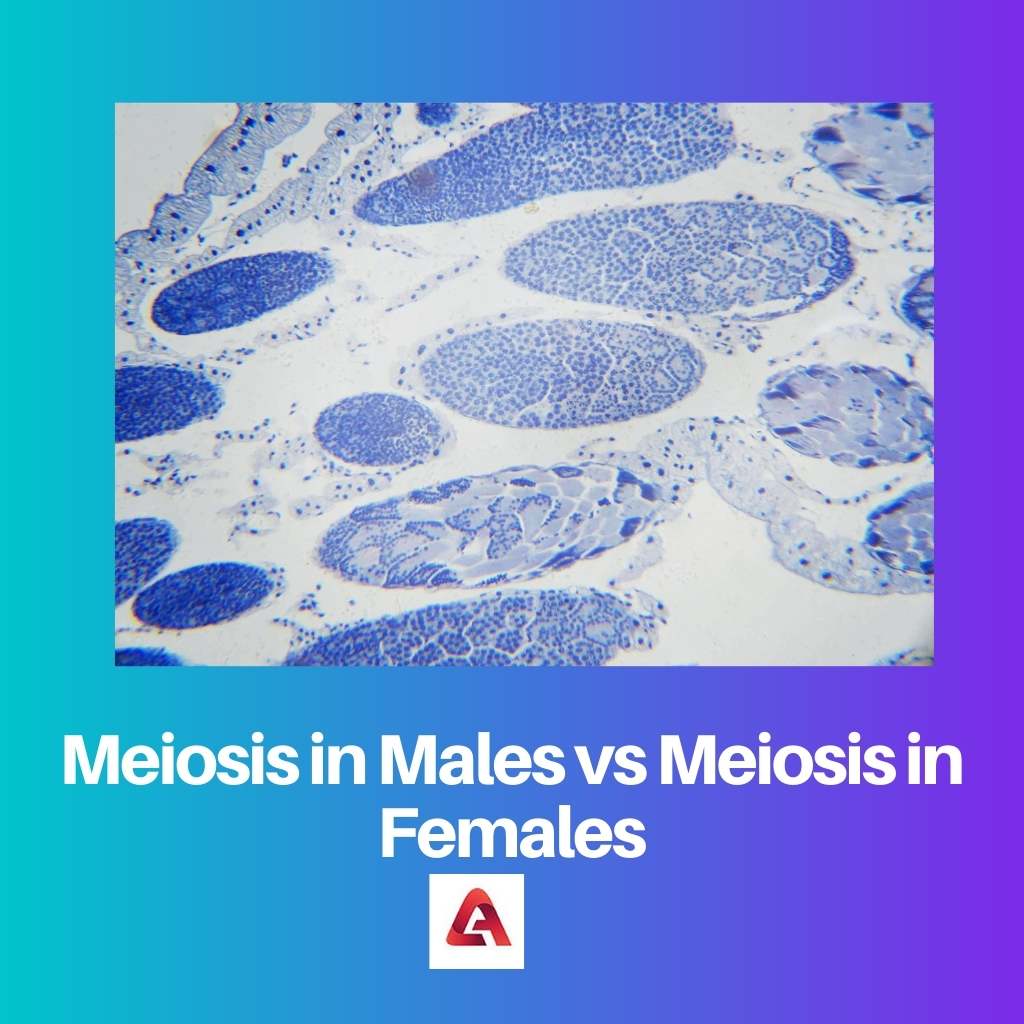Some of the changes even last forever in the human body. And crossing adulthood to old age, the body starts losing motor skills, becomes weak, prone to more diseases, and many other changes.
Key Takeaways
- Meiosis in males, called spermatogenesis, results in four sperm cells, while meiosis in females, called oogenesis, produces one egg cell and three polar bodies.
- Spermatogenesis occurs continuously throughout a male’s life, whereas oogenesis begins before birth and completes after puberty in females.
- Males produce sperm cells in the testes, while females produce egg cells in the ovaries.
Meiosis in Males vs Meiosis in Females
Meiosis in males results in four sperm cells with half the amount of chromosomes as the parent cell. After puberty, males undergo continual meiosis. Meiosis creates one egg cell and three polar bodies, each with half the number of chromosomes in females.

The age period is referred to as the ‘adolescence period’. It forms the sexual gametes, and the whole process occurs in the seminiferous tubules. The process is completed in two main steps – meiosis I and meiosis II.
Thus, most of the gametes that are generated or formed are destroyed, and the rest are stopped or arrested at the diplotene stage of the meiosis process. Then after entering the age of 12 to 14, the process starts again, and every month one of the eggs is matured.
Comparison Table
| Parameters of Comparison | Meiosis in Males | Meiosis in Females |
|---|---|---|
| Definition | Process of cell division resulting in gamete | Occurs before birth and the rest are formed in egg cells |
| Other Name | Spermatogenesis | Oogenesis |
| Location | Seminiferous tubules | Ovaries |
| Number of haploid cells | 4 spermatozoa or sperms | Single egg |
| Time | Few days or weeks | Before birth to about 45 years |
| Cell Division | Symmetric | Asymmetric |
| Chromosome Synapsis Efficiency | More | Less |
| Initial Start | Since puberty | Before birth |
| Size | Small | Large |
| Production | Continuous | Fixed and finite |
What is Meiosis in Males?
Meiosis is a scientific process in which the cell divides into half the daughter cells in the Stage I process, and then after the Stage II process, the daughter cells are divided to form 4 different daughter cells.
During the stage II or meiosis II process, the secondary oocytes are then replicated and produce four different spermatozoa or sperms.
The above process takes place in the seminiferous tubules present in males. The size of the gamete is also short, and they are very motile.
What is Meiosis in Females?
In females, the process of meiosis occurs with some changes as initially, and it gets started even before the birth of the girl child. The meiosis division starts when the fetus is just 12 weeks old, and all the cells divide during that time only, but the division stops after achieving a certain stage of meiosis.
The size of the gamete is large compared to males along with this, egg cells are not motile. And the whole process of meiosis occurring in females is commonly known as ‘oogenesis’.
Main Differences Between Meiosis in Male and Meiosis in Females
- The gamete size produced in the males is very small comparatively, on the other hand, the gamete size produced in the females is large.
- Gamete production in males is a very continuous process, while comparatively, on the other, gamete production in females is fixed and has a finite number.



